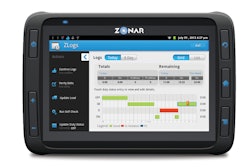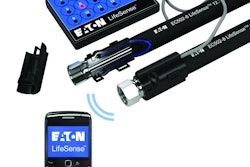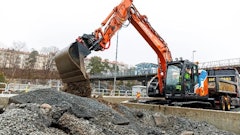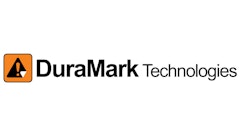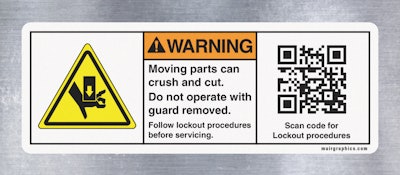
Little grids of black square dots arranged on a white background seem to be everywhere these days—and they’ve moved from print advertisements to point-of-sale signage to billboards to the exteriors of many products themselves.
While still primarily used for marketing and advertising purposes, QR codes are quickly expanding into industrial applications. Manufacturers are discovering that these codes are an effective way to deliver safety and instructional information, often placing them directly on equipment or signage used outdoors or in other harsh environments. That means an OEM has more to consider than the information when incorporating a QR code into (or onto) a vehicle; the durability and life expectancy of the graphic material selected for the QR code is just as important.
A brief history of the QR Code
The “QR” in this ISO-standard, two-dimensional barcode stands for “Quick Response.” Anyone with a scanner application installed on a smartphone or tablet can access a QR code. The app uses the phone or tablet’s camera function to scan the code and then links the user to a specific web page, often a landing page created for a particular product, service, event or promotion.
QR codes were first designed for use in the automotive industry in Japan in the 1990s, where they tracked vehicles during the manufacturing process. However, because QR codes arebfaster for a device to read and can store more data than standard UPC barcodes, they have become commonplace in consumer marketing and advertising in recent years, particularly as a form of mobile marketing to people on the go. Scanning a QR code is much simpler and quicker than typing a website’s URL into a browser on a small screen, and it gives the user immediate access to information.
Industrial info on-demand
Because QR codes are fast and easy to use, and can store more data than a standard UPC barcode, its applications are quickly expanding beyond marketing and advertising. A growing number of manufacturers are using them to put safety and instructional information right at their customers’ fingertips.
By placing a QR code on a machine’s safety label, for example, a company can link users instantly to relevant information such as product safety warnings, machine operating instructions, equipment user manuals or even training materials and videos. Or a manufacturer might use QR codes to direct users to landing pages that provide:
- Production history and specifications
- Service history and maintenance schedules
- Parts ordering and replacement information
- Customer service and support details
- Brand messaging
Beyond these applications, there’s also great opportunity for manufacturers to use QR codes in the areas of regulatory compliance, maintenance and infrastructure, and inventory control. Consider these possibilities:
- Regulatory compliance: Organizations could use QR codes to document important authorizations needed to comply with local, state or federal regulations; provide inspection or calibration expiration dates; or share permits and licenses.
- Maintenance and infrastructure: QR codes could offer easy access to service records and important history documentation for equipment and buildings, provide links to trouble-shooting options, and give contractors or maintenance personnel the ability to download schematic diagrams and product specifications.
- Inventory control: Employees and suppliers could use QR codes to access updatable information about equipment components and replacement parts.
Choosing materials that last
While the opportunities for employing QR codes in industrial settings are numerous, the challenge comes in making them last as long as the products to which they’re affixed. While marketing materials like print ads and direct mail pieces often have a short shelf life, industrial equipment, machines and signage typically are built to last for years, and they’re often exposed to harsh conditions outdoors or in factory environments. That increases the possibility that the graphics and decals on which QR codes are featured will deteriorate or become scratched, thus rendering the code useless and preventing users from accessing the important safety or instructional information they need. For that reason, creating decals and graphics with durability, weatherability and industrial strength in mind is critical. Fortunately, there are a variety of materials that deliver all three—including aluminum, stainless steel, polyester and vinyl.
Determining which material is right for each application will depend on the surface to which the QR code will be affixed and the environment in which it will live, such as next to an engine or outside under excessively hot or cold temperatures. An industrial graphics supplier can work with an OEM to identify the substrates and options that best meet its specific requirements.
Other considerations
In addition to selecting the right materials to ensure proper life expectancy, OEMs will want to consider the ideal position and placement of the decal on their equipment or signage. How large should it be? From what distance will the QR code typically be scanned? Where’s the most accessible place to locate it? It is also important to make sure the landing pages to which QR codes direct users always contain the most current information.
There’s a lot to keep in mind when applying QR codes in an industrial setting—but created and applied correctly, they’re proving to be an excellent tool to reach an OEM’s end-user customers with the information they need to do their jobs safely and productively.





